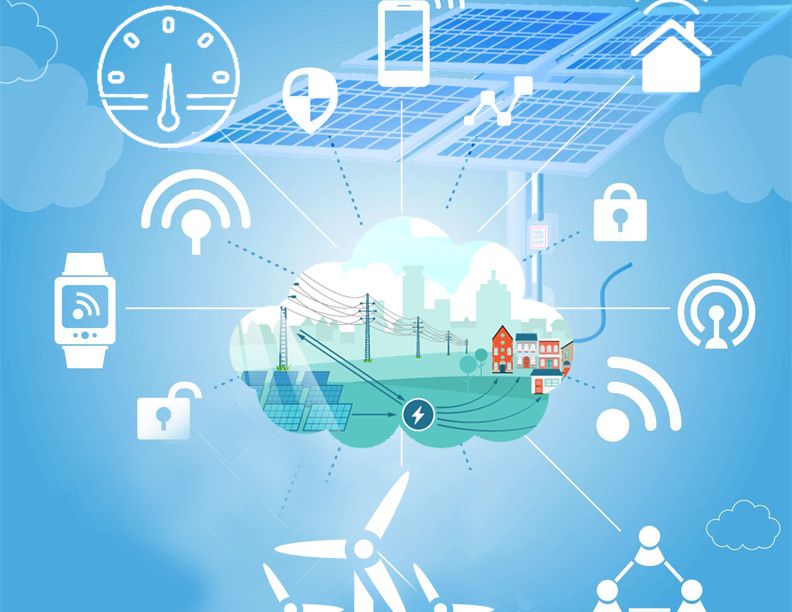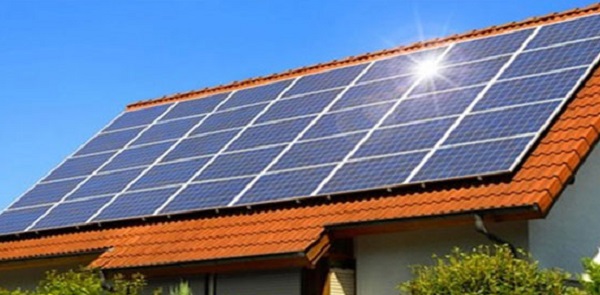Internet of Things in the Energy Sector
Energy Industry has changed over the last 20 years. As worldwide energy consumption is assumed to grow by 40% over the next 25 years, the requirement for smarter energy solutions has reached to the higher level. There are few crucial shifts toward more efficient energy management. The aim of power generation is to achieve affordability, availability, sustainability and minimize the use of fossil fuels and emissions.
How will the IoT strike the energy sector? The energy sector is set to be reorganized by the IoT, from the way the electrical grid is managed, to power generation and the energy productivity improvements. Today, sensor-based technology and data science allow the efficiency and automation of wind farms and solar fields.
The Internet of Things in the energy market was evaluated at USD 12.84 billion in 2018 and it is assumed to reach USD 33.34 billion by 2024, with a CAGR of 17.24% during the divine period of 2019–2024.
There are following main areas where IoT can be very Impactful in Power generation.
1. Remote Asset Monitoring and Management
This is likely to be one of the most popular uses of IoT in industrial applications. Connected sensors are being utilised to calculate vibration, wear, tear, temperature and other parameters to discover the overall health of assets from turbines to transmission lines. Movements in the data acquired from sensors could be use to calculate the “time to failure” of key infrastructures and then plan maintenance, minimising downtime that will help to keep away from the economic outcomes of such downtimes.
Acquiring IoT in energy sector could also help recognise safety parameters like gas leakages before they create harm to workers and equipment. The overall cost that spends on parts and repairs are minimised which will make electricity more available and affordable.
2. Process Optimisation
IoT has the capacity to give real-time data about the overall state of the whole generation station and this is significantly helping plant automation. Real-time information is being utilised to fine-tune the operations of plants, increasing energy conversion from fuels and minimising the costs of maintenance.
3. Integration and management of renewable energy sources
Many energy companies are developing to present solar, which is among the most energy-efficient and cost-effective origins of renewable electricity in the market. The main advantage of using IoT in solar energy is that you can observe exactly what’s happening with all your assets from one central control panel.
By attaching your devices to a cloud network, you can recognise from where the problem has raised and assign a technician to fix the issue before it will damage your entire system. A main aim of power generation is the elimination of fossil fuels but at the meanwhile, generating stations are capable to cut down emissions by integrating energy generated through renewable means such as a Wind and Solar with the standard coal or gas stations.
The output and uptime of renewable sources can also be easily expanded using IoT based solutions as it supports to discover the production values and overall health of renewable sources regardless of their location.
4. More Distributed Grid
The energy grid is becoming more dispersed due to rise of residential solar and other technologies. Residential solar capability has grown quickly in recent years and could develop by more than three times to 41 gigawatts by 2025, as per report on analysis from Credit Suisse. Homeowners and businesses can now create their own electricity by locating solar panels on their rooftops or even building small wind turbines on their properties.
This increasingly distributed power system presents a huge change for energy companies. In addition to controlling few huge generators, they must also now handle a growing number of small generation resources located across the grid.
This represents a challenge to grid operators, but smart grid technology energised by the IoT is helping to allow this distributed energy transformation. A smart grid utilises IoT technology to recognise changes in electricity supply and demand. It can react to these changes autonomously or provide operators with the data they require to manage more accurately.
Consumer-facing IoT energy devices and use cases
Smart meters
These IoT energy devices associate consumers directly to the power distribution station, empowering for a two-way communication. As a outcome, they can send crucial operation information to the utility agencies in real-time.
This helps utility agencies to rapidly address any performance concerns, involving outages and minimize the system downtime. Smart meters can also recognize and automatically separate the damaged section of a line without disturbing the performance of the rest of the network.
Developing Intelligent Energy Efficient Buildings with IoT Technology
The Green Building term isn’t something new and has been around for a time. To maintain energy consumption costs and greenhouse gas emissions to a minimum is the biggest challenge. Building Energy Management Systems or BEMS play a vital role in the buildings’ operational efficiencies. The IoT is transforming the energy management terrain in the smaller office building and even home environment. An IoT platform in the BEMS environment contains gateways, sensors and wireless communications.
To provide better data to the analytics engine that in turn gives better insights and actions to customers with the reductions in cost from this perspective to technology. IoT-enabled intelligent building systems are safe, scalable and compatible. IoT technology enables the facility manager to have a centralized sight of building operations by combining all the building data gathered.
Another advantage of an IoT-enabled intelligent building is to give powerful visual communications of complex data sets. Dashboards, mobile applications and automated alerts can provide facility manager’s a rapid and brief view of the building performance.
Grid balancing and Contribution
IoT has the capacity to give the real-time information required to effectively handle congestion on Transmission and distribution lines. With IoT, the grid can assure the connected generation stations have met the connection requirements from frequency to voltage control to prevent unreliability.
One of the significant future trends in electricity generation is the contribution of regular homes to the energy grid.
Excess energy produced by solar panels at the rooftops in various homes is contributed to the Grid. One of the essential technologies that will drive this transformation is the IoT.
The relationship of renewable energy based generation plants with varying production levels will bring variations in voltages at various nodes on the grid causing changes in power flow, but all of these can be, handled using real-time data supplied by IoT solutions.
Benefits of IoT Technology in the Energy Sector
Internet of Things is the facilitator of the modern energy industry. IoT technology helps connect all the elements of power production and consumption, acquire visibility in the processes and give real control at every step of energy flow from utilization to the supply to the end users. This collaboration drives efficiency to both renewable and hydrocarbon economies.
Here are few basic benefits of IoT in the energy sector.
Higher energy productivity using IoT
Mainly due to the increased control over energy consumption, organizations can remarkably minimize waste. This leads to considerable cost savings and empowers the cutting of CO2 emissions, which has a positive effect on the environment.
Cost Savings
IoT solutions for the energy industry assist organizations to cut maintenance and operating costs through system modernization and to reduce human effort.
Increased reliability of power supply
The average cost of a power outage in the US currently equals to $150 billion per year and around 25% of all industrial outages were originated by equipment failures. With that being said, a proposed solution to address these concerns is to always be connected by IoT energy systems, as they provide a more stable and definitive source of power.
New data sources
In terms of assembling and processing huge data, IoT energy devices offer real-time insights into system’s performance. By using this data, it is possible to apply predictive maintenance models as well as increase staff safety.
Control and automation
IoT and energy solution helps to automate the management of wind farms, optimize maintenance and thus minimize the cost prominently. The same is applicable for solar fields, geothermal plants and traditional oil and gas deposits. Not only IoT enables better operation control, but also increases the safety on the premises.
Availability
With the help of sensors and analytics tools, you can attach your solar panels, rainwater harvesters, light and heat trackers, smart roof and windows into one system and control your green home using easy-to-read dashboards and desktop or mobile application.
Plenty of industries and households spend on Internet of Things and adopt power consumption by analysing and control tools that ultimately help to cut down the use of electricity and to save money.
Irrespective of your primary business focus, spending on smart energy initiatives is a great idea, especially now as the global community is attempting to live a more sustainable, waste-free life.
Internet of Things energy management solutions is in more demand now, as a requirement for green energy and environmental conservation has become a norm. Today, IoT already enables green initiatives, supports the entities in this sector, get the best of their data, increase efficiency and safety on the premises.



